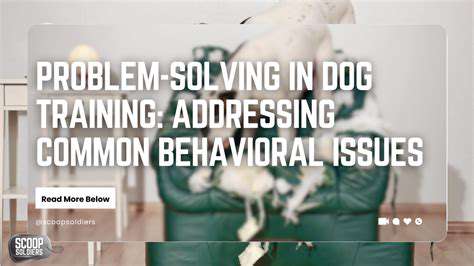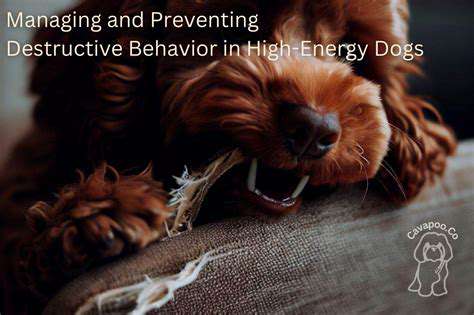How to fix common behavioral issues in dogs

Understanding the Root Causes
Behavioral challenges in dogs rarely stem from a single source. Instead, they emerge from a tangled web of genetic predispositions, environmental influences, and training history. Pinpointing the core motivation behind unwanted behaviors forms the foundation for meaningful change. Early life experiences, particularly during critical socialization periods, can cast long shadows on a dog's adult temperament. Consider how a puppy raised in isolation might develop disproportionate fear responses to normal stimuli.
Environmental disruptions frequently serve as catalysts for behavioral changes. The arrival of a new baby, relocation to unfamiliar surroundings, or even shifts in daily schedules can trigger stress responses. These often manifest through behaviors like persistent vocalization, inappropriate elimination, or destructive chewing - all attempts by the dog to cope with perceived instability.
Recognizing Common Behavioral Problems
Most canine companions will exhibit some form of problematic behavior during their lifetime. Accurate identification of the specific issue marks the starting point for effective intervention. Excessive barking, for instance, might represent anything from territorial alertness to separation distress. The timing, frequency, and context of the vocalizations provide crucial diagnostic clues.
Destructive chewing often reflects inadequate mental stimulation or insufficient physical exercise. Lasting solutions require addressing both the symptom (the chewing) and its underlying causes (boredom, anxiety, or teething discomfort). Providing appropriate outlets like food-dispensing toys or scheduled play sessions can redirect this natural canine behavior constructively.
Effective Training Techniques
Modern dog training emphasizes reward-based methodologies that strengthen desired behaviors through positive association. This approach centers on marking and reinforcing good choices with treats, play, or affection. Consistency in application and patience during the learning process prove far more effective than punitive measures. Harsh corrections often damage the human-animal bond while failing to teach alternative behaviors.
The power of positive reinforcement lies in its ability to build enthusiastic cooperation. When dogs associate obedience with enjoyable outcomes, they become active participants in their own training. This creates a virtuous cycle where both handler and dog experience reduced frustration and increased success.
Environmental Modifications
Strategic adjustments to a dog's living space can dramatically improve behavioral outcomes. For anxiety-prone individuals, gradual desensitization protocols combined with counterconditioning can build confidence. Designating a quiet retreat space equipped with familiar bedding and chew items provides a valuable stress-relief valve. This sanctuary allows dogs to self-regulate during overwhelming situations.
Environmental management also includes controlling access to temptation. Baby gates can restrict entry to rooms containing vulnerable items, while providing approved chewing alternatives in accessible locations. Rotating toy selections maintains novelty and engagement, reducing the appeal of inappropriate targets.
Seeking Professional Help
Persistent or severe behavioral issues often benefit from expert intervention. Certified applied animal behaviorists and veterinary behaviorists possess specialized training to address complex cases. Their objective assessment can differentiate between training issues and potential medical contributors like pain or neurological conditions. Many problematic behaviors actually represent symptoms of underlying health concerns.
Professional guidance becomes particularly valuable for aggression cases. A qualified behaviorist can design customized behavior modification plans while ensuring safety protocols. In some instances, pharmacological support may be recommended as part of a comprehensive treatment approach.
Managing Destructive Behaviors in Dogs: Preventing and Correcting

Understanding the Motivations
Destruction represents a symptom rather than the core issue. Effective management requires detective work to uncover the driving forces behind the behavior. Common culprits include separation anxiety, boredom, teething discomfort in puppies, or even undiagnosed medical conditions. The timing and nature of destructive episodes often reveal their origins.
Pattern recognition proves invaluable. Does destruction occur primarily during absences? This suggests separation distress. Is it concentrated in specific locations? This might indicate territorial marking or barrier frustration. Documenting these patterns provides the roadmap for targeted intervention.
Communication Strategies
Clear communication forms the bedrock of behavior modification. Dogs thrive on predictability and consistent feedback. Establishing unambiguous cues for acceptable versus unacceptable behaviors prevents confusion. For example, teaching a solid leave it command provides a constructive alternative to destructive chewing.
Attention represents a powerful reinforcer, even when negative. Ignoring undesirable behaviors while lavishly praising appropriate alternatives teaches dogs which behaviors earn rewards. This approach requires patience but yields lasting results by addressing the attention-seeking component of many destructive behaviors.
Positive Reinforcement Implementation
Reward-based systems outperform punishment by focusing on what dogs should do rather than what they shouldn't. Timing proves critical - rewards must immediately follow desired behaviors to create strong associations. Variable reinforcement schedules (occasional rewards for maintained good behavior) can increase behavior persistence.
Creative reinforcement strategies might include:- Food puzzles that reward mental engagement- Play sessions following calm behavior- Verbal praise paired with physical affection
Environmental Optimization
Thoughtful environment design can prevent many destructive behaviors before they start. Puppy-proofing isn't just for puppies - many adult dogs benefit from managed access to temptation. Strategic use of crates, exercise pens, and baby gates creates safe zones while protecting vulnerable belongings.
Environmental enrichment addresses boredom-related destruction:- Rotating toy selections maintain novelty- Food-dispensing toys provide mental stimulation- Scheduled play sessions meet exercise needs- Window perches satisfy observational instincts
Professional Consultation
When destructive behaviors persist despite consistent intervention, professional assessment becomes crucial. Veterinary evaluation can rule out medical contributors like pain, cognitive decline, or neurological issues. Certified trainers can identify subtle handler errors that may unintentionally reinforce unwanted behaviors.
For severe cases like separation anxiety, a multimodal approach often works best:- Behavior modification protocols- Environmental adjustments- Possible pharmacological support- Graduated desensitization programs
Successfully navigating canine behavior challenges requires patience and flexibility. Each dog represents a unique combination of genetics, history, and personality. What works perfectly for one individual may prove ineffective for another, necessitating customized approaches.
Enhancing Communication and Building a Strong Bond
Behavioral Root Cause Analysis
Surface-level behavior modifications often fail because they address symptoms rather than causes. A dog's actions always serve a purpose, even if that purpose isn't immediately obvious to humans. Destructive chewing might indicate anxiety relief, teething discomfort, or even nutritional deficiencies. Careful observation helps uncover these hidden motivations.
Active Engagement Techniques
Quality interaction goes beyond basic commands. Engaging a dog's mind through:- Scent work games- Trick training sessions- Interactive puzzle toysstrengthens the human-animal bond while providing constructive outlets for energy.
Clear Expectation Setting
Dogs thrive on consistency. Establishing and maintaining:- Predictable routines- Clear house rules- Uniform commandscreates a stable framework that reduces anxiety-driven behaviors.
Positive Relationship Building
The strongest bonds form through shared positive experiences. Regular:- Training games- Exploratory walks- Relaxed cuddle sessionsbuild mutual trust and understanding that transcends simple obedience.
Holistic Needs Assessment
Behavioral issues often signal unmet needs in:- Physical exercise requirements- Mental stimulation needs- Social interaction preferencesAddressing these fundamental requirements prevents many problems before they arise.
- Monitor Your Dog's Behavior for a Happier Pet
- How to keep your dog’s coat shiny and healthy
- How to manage a dog’s separation anxiety at night
- How to recognize signs of illness in your dog
- Best practices for feeding your dog while traveling
- Top rated dog foods for optimal health
- Helping your dog feel comfortable during pregnancy
- How to train a dog to walk on a leash without pulling
- The best dog crates for travel and home use
- How to strengthen your dog’s joints
- How to use calming music to relax your dog
- How to prevent overheating during long walks